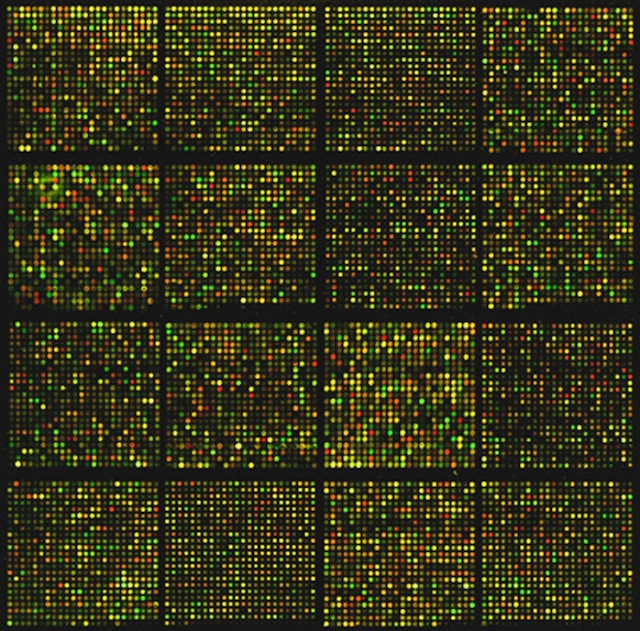The future of biohacking is a promising one, with advancements in technology happening every day.
This ever-growing industry only looks to become larger as we gain a better understanding of its potential. This is why so many people are excitedly looking forward to Biohacking Conference 2023 and all the new advancements and novel ideas that are to be discussed there. From biohacking hair growth to biohacking superhuman performance, biohacking vitamins to biohacking village, biohacking hair loss to biohacking orb—the possibilities are truly endless.At the same time, biohacking has adapted to our current society, influencing fields such as fitness, skincare, and even fertility in ways that were previously impossible. From biohacking gym to biohacking Miami, from biohacking experts like Ben Greenfield to biohacking skincare lines, from biohacking near me to the biopharming companies, all the way to the biohacking congress—there’s a lot to be excited for, and a lot to look forward to when it comes to the future of biohacking. While we don’t know what advancements will be made or what new and improved methods will be discussed at Biohacking Conference 2023, we can safely assume that this event will be one of the most groundbreaking and revolutionary moments within the biohacking industry.
SYNOPSIS
The article on biohacking explores the intersection of technology and human enhancement but falls short of critically addressing the ethical implications and potential risks associated with the practice. While it provides an overview of biohacking types and applications, it lacks depth in examining the socioeconomic divide, informed consent, and the consequences of emerging technologies like gene editing and brain-computer interfaces. A more comprehensive and balanced discussion is necessary to ensure responsible practices and consider the broader societal impact of biohacking.
Introduction
In an era where technology permeates nearly every aspect of our lives, the concept of biohacking has emerged as a fascinating field of exploration. Biohacking represents the convergence of biology, technology, and human enhancement, to augment our physical and cognitive abilities beyond their natural limitations. This article delves into the world of biohacking, exploring its various dimensions, applications, ethical implications, and potential future developments.
The upcoming biohacking conference in 2023 is sure to be an innovative experience. This conference will bring together the top minds in the field of biohacking to discuss the latest advancements and trends. Experts will be discussing topics such as biohacking hair growth, superhuman performance, vitamins, and much more. There will also be a biohacking village where attendees can experience hands-on demonstrations of biohacking and learn about the latest trends and advancements.
Other topics that will be discussed include biohacking hair loss, fitness, and skincare, as well as biohacking with natural food. Attendees will also be able to learn about biohacking Orb, an innovative device that helps track your fitness level and improve your overall health. Additionally, attendees can meet with biohacking experts like Ben Greenfield to learn about biohacking and other topics related to this field. There will also be biohacking companies present to discuss how their products can help biohackers achieve their goals.
At the biohacking conference in 2023, attendees will have the opportunity to learn from biohacking experts, meet with biohacking companies, and explore the latest advances in biohacking technology. From Miami to New York City, this biohacking conference is sure to provide attendees with a comprehensive and valuable experience.
I. Understanding Biohacking
Biohacking, in its simplest form, refers to the practice of using technology and self-experimentation to enhance one's body and mind. It involves a multidisciplinary approach that combines elements of biology, genetics, computer science, and engineering. Biohackers, also known as "grinders" or "DIY biologists," tinker with their own biology, pushing the boundaries of human potential.
A. Types of Biohacking
 |
| Photo by Google DeepMind on Unsplash |
1. DIY Biology: DIY biology empowers individuals to conduct experiments and explore biological systems outside traditional laboratory settings. This form of biohacking often involves genetic engineering, synthetic biology, and open-source hardware and software platforms.
2. Body Modification: Body modification biohacking entails implanting technological devices, such as chips or sensors, into the body. These devices can monitor health parameters, enhance sensory perception, or even integrate with existing technologies, such as smartphones or smart homes.
3. Nutrigenomics: Nutrigenomics focuses on the interaction between nutrition and genetics. By analyzing an individual's genetic profile, biohackers can optimize their diets and lifestyle choices to maximize health and performance.
II. Applications of Biohacking
Biohacking holds immense potential across a wide range of applications, revolutionizing how we approach healthcare, performance enhancement, and personal well-being.
A. Health and Wellness
 |
| Photo by Alexander Grey on Unsplash |
1. Personalized Medicine: Biohackers are exploring the field of personalized medicine, leveraging genetic data and advanced diagnostics to develop tailored treatments and preventive strategies for individuals.
2. Health Tracking: Wearable devices and bio-sensors enable biohackers to monitor various health parameters in real time, fostering proactive health management and early detection of potential issues.
3. Cognitive Enhancement: Biohacking techniques, such as nootropics (cognitive-enhancing substances) and transcranial stimulation, aim to optimize brain function, memory, and concentration.
B. Performance Enhancement
 |
| Photo by Seth kane on Unsplash |
1. Athlete Optimization: Biohacking techniques can aid athletes in optimizing their training routines, recovery strategies, and performance through monitoring biometric data, tracking sleep patterns, and optimizing nutrition.
2. Sleep Enhancement: Biohackers experiment with various methods, such as sleep tracking devices, smart lighting, and cognitive techniques, to improve the quality and duration of sleep, leading to enhanced performance and well-being.
III. Ethical Considerations
As with any emerging field, biohacking raises important ethical questions that need to be addressed to ensure responsible practices and safeguard individual rights.
A. Safety and Regulation
 |
| Photo by Heidi Kaden on Unsplash |
1. Self-Experimentation: Biohacking often involves self-experimentation, which can carry risks if not conducted responsibly. Striking a balance between personal freedom and safety is crucial.
2. Regulatory Framework: Developing a regulatory framework for biohacking is essential to ensure public safety, prevent misuse of technology, and address potential health risks associated with DIY biology and body modifications.
B. Equity and Accessibility
 |
| Photo by Pat Whelen on Unsplash |
1. Socioeconomic Divide: If biohacking technologies become widely available, there is a risk of exacerbating existing inequalities, creating a divide between those who can afford enhancements and those who cannot.
2. Informed Consent: Ethical considerations include obtaining informed consent from individuals who engage in biohacking, ensuring they are fully aware of the
potential risks and benefits involved.
IV. Future Perspectives
The field of biohacking is rapidly evolving, and several exciting possibilities lie on the horizon.
A. Gene Editing and CRISPR Technology
 |
| Photo by National Cancer Institute on Unsplash |
1. Gene Therapy: Advances in gene editing technologies, such as CRISPR, hold promise for treating genetic diseases and enhancing human capabilities.
2. Designer Babies: The ability to modify the genetic makeup of unborn children raises ethical questions about the boundaries of biohacking and the concept of creating "designer babies."
B. Brain-Computer Interfaces
1. Neural Implants: Brain-computer interfaces (BCIs) could revolutionize how we interact with technology, allowing direct communication between the brain and external devices.
2. Cognitive Enhancement: BCIs offer the potential for cognitive enhancements, such as improved memory, enhanced learning capabilities, and direct brain-to-brain communication.
Risks Involved Biohacking
 |
| "Unintended Consequences of Fruit Ingestion, Part II" by John Scalzi is licensed under CC BY 2.0. |
Conclusion
Biohacking represents a frontier of exploration at the intersection of technology and human enhancement. It opens up new possibilities for personal well-being, healthcare, and performance optimization. However, ethical considerations must be at the forefront to ensure responsible practices, equitable access, and public safety. As biohacking continues to evolve, it is essential to strike a balance between innovation and the protection of individual rights and societal well-being.
In conclusion, the risks associated with biohacking are significant and cannot be ignored. The article's failure to thoroughly address these risks undermines its credibility and presents an incomplete picture of the field. Biohacking poses potential health complications, ethical dilemmas, and risks of misuse or exploitation. The absence of proper regulatory frameworks and oversight further heightens these concerns.
Additionally, the potential amplification of socioeconomic inequalities through limited access to biohacking technologies is a pressing issue that demands attention. To responsibly navigate the field of biohacking, it is crucial to critically examine and address these risks, establish comprehensive regulations, and prioritize the well-being and equitable treatment of individuals. Only through thoughtful consideration of the risks can we ensure that biohacking evolves in a manner that benefits society as a whole while mitigating harm to individuals and avoiding unintended negative consequences.

.gif)

.gif)





0 Comments
Please do not enter spam links in the comment box.